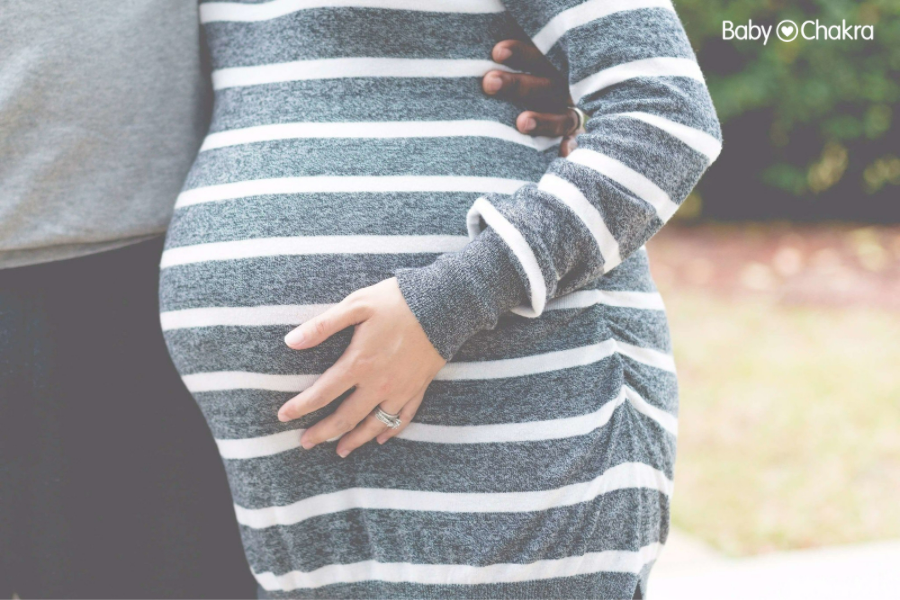
Complications That May Force You To Get A C-Section
12 Apr 2022 | 4 min Read
Sayani Basu
Author | 607 Articles
One of the major decisions that a mum-to-be would make is how to deliver her baby. Vaginal delivery is considered to be the safest way of delivering your baby. However, doctors today are performing caesarean deliveries more often.
A C-section or caesarean section is the surgical delivery of a baby through incisions in the abdomen and uterus.
A C-section might be planned ahead of time if the mother has certain complications or if she has had a previous C-section and isn’t considering a vaginal birth after caesarean (VBAC).
However, the need for a first-time C-section doesn’t become obvious until labour is underway. Caesarean deliveries are usually avoided before 39 weeks of pregnancy so that the unborn gets sufficient time to develop in the womb.
We are here to list down some of the complications that might force you to get a C-section.
Complications That May Force You To Get A C-Section
Your doctor might schedule a caesarean delivery in advance of your due date due to complications. It might become necessary during labour because of an emergency.
Here are some of the medical reasons for a C-section:
- Prolonged labour: According to Centres for Disease Control and Prevention, one-third of C-section happens due to prolonged labour. It happens when the mum-to-be is in labour for 20 hours or more. It also happens when mums who’ve given birth before are in labour for 14 hours or more.
Prolonged labour is also called “failure to progress” or “stalled labour”.
Babies that are too large for the birth canal, slow cervical thinning, and mums carrying multiples can all prolong labour. In such cases, doctors might consider a C-section to avoid complications.
- Abnormal positioning: In order to have a successful vaginal birth (normal delivery), babies should be positioned head-first near the birth canal.
However, babies sometimes flip and position their feet or butt towards the canal (breech position). In these cases, C-section might be the safest way to deliver, especially for women carrying multiple babies.
- Birth defects: Sometimes, doctors choose a C-section to reduce delivery complications. A C-section might be the safe way to deliver babies diagnosed with certain birth defects, like excess fluid in the brain or congenital heart diseases.
- Chronic health condition: The doctor might recommend C-section if the expecting mum has certain chronic health conditions like heart disease, high blood pressure, or gestational diabetes.
Doctors will also suggest a C-section if the mum-to-be has HIV, genital herpes, or any other infection that could be transferred to the baby through vaginal delivery.
- Cord prolapse: Cord prolapse is a condition when the umbilical cord slips through the cervix before the baby is born. This can lessen blood flow to the foetus, putting its health at risk.
Although rare, a cord prolapse is a serious condition and requires an emergency caesarean delivery.
- Cephalopelvic disproportion (CPD): A CPD is a condition when the expecting mum’s pelvis is too small to deliver the baby vaginally, or if the baby’s head is too large for the birth canal.
In such cases, the baby cannot pass through the vagina safely.
- Placenta issues: Doctors will perform a C-section when the low-lying placenta partially or completely covers the cervix (placenta previa).
A C-section is also necessary when the placenta separates from the uterine lining which causes the baby to lose oxygen (placenta abruption).
According to the American Pregnancy Association, placenta previa happens to one in every 200 pregnancies. Plus, about one percent of pregnant mums experience placental abruption.
In addition to these, the doctor might choose a C-section if the baby is not getting enough oxygen. Thus, foetal distress is another reason why doctors opt for a C-section.
Mums with a prior history of more than one low transverse caesarean section are at an increased risk for uterine rupture. This risk increases significantly when the woman has had three caesarean deliveries. In such cases, doctors plan a C-section.
Giving birth is a beautiful and miraculous thing and only we, women have been blessed with such a power. Expecting mums should be prepared in case a C-section is necessary. It’s best to be prepared for the unexpected. Cheers to pregnancy!
A


Related Topics for you
Suggestions offered by doctors on BabyChakra are of advisory nature i.e., for educational and informational purposes only. Content posted on, created for, or compiled by BabyChakra is not intended or designed to replace your doctor's independent judgment about any symptom, condition, or the appropriateness or risks of a procedure or treatment for a given person.
